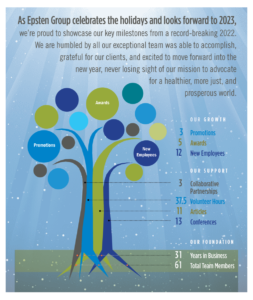Studies released in late 2022 revealed an alarming change in the landscape of the AEC industry: construction costs had risen by nearly 30% since 2019, and by 17.5% alone from just 2020 to 2021: the largest spike in this data from year-to-year since 1970 (x). While models project costs returning to close to typical levels by mid-2023, “given the large number of construction inputs—many of which are often subject to geopolitical risks such as tariffs and sanctions—costs for some materials may remain volatile” (x).
The five main factors that influence construction pricing are:
- supply & demand,
- backlog,
- labor costs,
- commodity pricing, and
- local market disruption.
Because the construction industry typically lags the economy as a whole, an economic inflection does not equate to an immediate reaction. Instead, prices hold steady while the industry works through its backlog and assesses the economic situation. Then, as backlog levels begin to deplete, contractors are willing to take more risk and lower their pricing to secure additional work. (x)
What does this mean for the budget of your upcoming project plans? Specifically, how does this impact the design and construction of zoo projects?
Answering this question begins with considering the method of delivery for your project:
- design/build (DB),
- design/bid/build (DBB),
- construction management at-risk (CMAR), or
- integrated project delivery (IPD).
Determining the best construction delivery method depends on several factors, including the owner’s expertise in the building process, budget, timeline, and expectations for design(x).
Which method makes the most sense for your project varies widely depending on project goals; however, it’s important that the project team stays consistent with whichever method is chosen throughout the entirety of design. Changing this method often causes a project to exceed initial budget projections and leaves project teams disconnected.
In the case that this is unavoidable, or, if a project simply requires readjusting to meet owner budget requirements, another strategy becomes crucial to successful completion: value engineering.
Value engineering is “an organized effort directed at analyzing designed building features, systems, equipment, and material selections for the purpose of achieving essential functions at the lowest life cycle cost consistent with required performance, quality, reliability, and safety” (x). It’s a way to reassess areas of improvement and cost reduction as soon as it becomes evident that the projected costs will exceed the budget.
Depending on the goals of the project and the flexibility of the client, value engineering can be an efficient way to save money while maintaining the project intention. It encompasses many different options for the client to save money, whether through reducing the initial cost of the project, decreasing operating costs by using different materials, or making changes to the scope of work.
Our team at Epsten Group, in partnership with Ursa International, has extensive experience navigating value engineering throughout a wide variety of Zoo Design projects. Our interdisciplinary staff allows us to bring an unmatched set of expertise to each project, ensuring that your project meets the goals of all stakeholders, regardless of an ever-changing cost landscape.
Value Engineering in Action
A recent project framed value engineering around the design of a Master Plan, wherein the client wanted to rebuild aging habitats for half a dozen different species. The rebuilding efforts involved displacement and temporary relocation of current exhibits to make way for the new facilities.
The initial budget for the project did not consider the temporary displacement of exhibits during construction. The initial design of the elephant habitat, for example, utilized a cast-in-place concrete system with added insulation sandwich between the outside and inside layers of concrete, increasing the structural cost and construction schedule.
Our adaptive process allowed the wall system design to be changed to a tilt-up “sandwich” concrete system. This allowed fabrication on-site and reduced labor cost and quality control of the wall panels since the panels are designed and fabricated to the final finishes. Ultimately, this saved the project 3 months in schedule and labor cost, and increased efficiency throughout the system.
Another example project that underwent value engineering during the design phase was a new bear habitat, including holding cells, keeper facilities and play yards for the animals. The project also included an open viewing pavilion for visitors.
The initial budget for the project was approximately $6,000,000. The design team worked on the concept and schematic design phases, and a rough order of magnitude cost estimate was completed at the end of this phase to verify and determine the budget for the project. The cost estimate came in at $12,000,000– twice the initial budget for the project.
After reworking several facets of the design to reduce costs wherever possible, it became evident that an intuitive value engineering process would be necessary in order to effectively achieve project goals.
The client was presented with 3 options: increase the budget to meet the program, reduce the scope of work, or deliver the project in phases. The client opted to go with the phasing option. The design team then focused our efforts and deliverables to only essential components required for animal wellbeing as the first phase of the project.
The use of these two different approaches allowed our clients to realize the highest value of their investments and to focus their decisions on the best use of their resources that maximized both the operational flexibility and animal welfare.
Whatever the budget for your upcoming project, our team is excited to help. Reach out to us here to get started.



